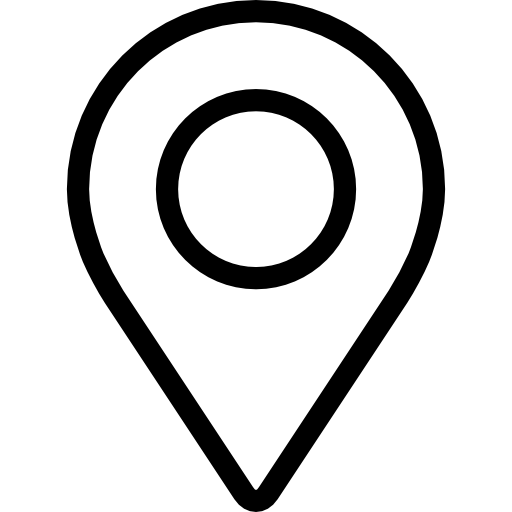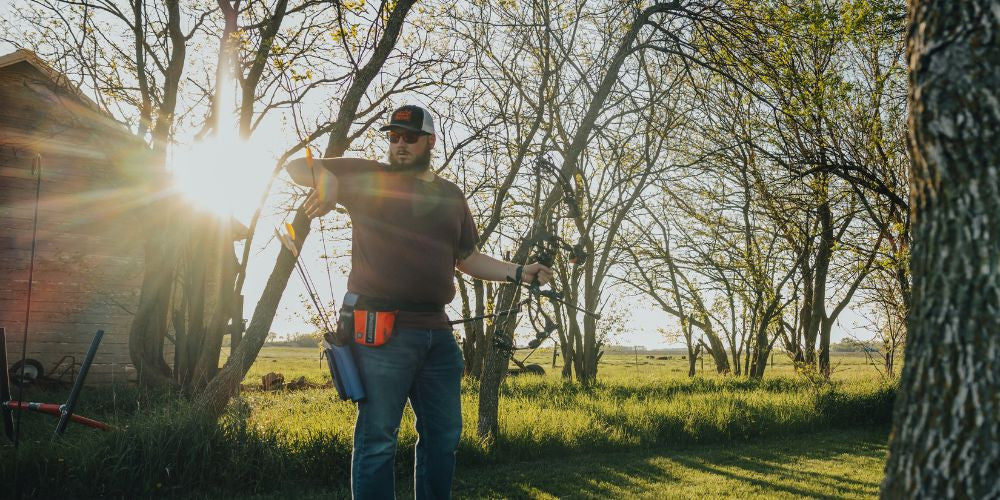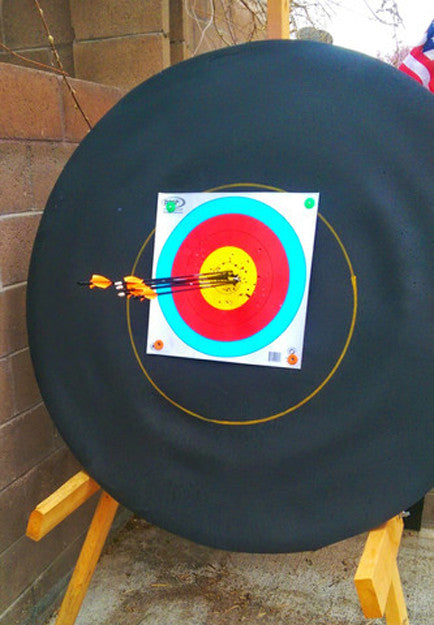Is your recurve on Plane?

It’s a beautiful spring day and you just arrived at your favorite outdoor shooting place. The sky is blue, no wind, perfect temperature, grass is green, and the target seems amazingly colorful today. As you draw your bow back you feel confident and assured that today will be great shots. As the arrow is released you feel relaxed and know it was a great shot. Thud! The arrows hits the target and it is not exactly what you expected. You draw back and shoot again. Thud! Arrow hit the X. As the day goes on your shots overall are good, but you just can’t explain the strange flyers that happen and your groups could be a little tighter.
You are not brand new to archery and feel your form is pretty solid, your bow is tuned, and everything seems to work well. As you try and figure out how to make the bow more consistent and more forgiving, you start looking at the little tuning bits. You check that the limbs are aligned. You check the string against the limb center and make sure that it aligns with the stabilizer. You check your center shot. Everything is still perfectly centered and tuned. But no matter what you do it always seems that there are some shots that just shouldn’t be as off as they are and the bad shots definitely are not forgiving.
You grab your bow manufacturer set-up guide and look it over to make sure there is nothing you have missed over time. You go online and search for others having similar issues and you find some responses but nothing is new to you. It just does not make sense and it all seems to be as perfect as it can get and sometimes you have to just deal with what you have and work through it by practicing more.
Forgiveness

A bad shot is still a bad shot. No archer on the planet is absolutely perfect! Not one. Even when a perfect score is shot, there is still room for improvement. But as we are humans we are prone to mistakes big and little. Those little mistakes that we make can seem even bigger given what might be at stake. Micro tuning helps make the groups tighter and lessons the minor bad shot factor. The tune of the bow in general is not only crucial to help make the shots more accurate, but a proper tune helps the bow be more forgiving of our mistakes.
The term “forgiveness” is not really understood in archery. No set-up in the world will make a bad shot good. Good shots and bad shots are up to the archer behind the bow. Even when a bow is not well tuned, a really good archer can adjust and still put the arrow where they want it to go. When we say that a bow is more forgiving, what we really mean is that the bow tune and arrow tune are matched so well that any equipment variance can be taken out of the equation. The archer still has to execute a good shot no matter what. A bow that is properly tuned with a correctly tuned arrow will seem more forgiving. A more forgiving bow is nothing more than a properly tuned bow.
Finding Balance

After doing your research and checking over and over trying to find the smallest thing that could help, you find yourself here. You have come to the right place!
What if I told you that there is one problem in your setup right now that is most likely not correct from day one? One step that no one really talks about but is a factor in having a more forgiving bow. One step that needs to be done right after you align your limbs in the early stages of setting up your bow.
Is your bow on plane?
If you have no idea what being on plane means, then you are not alone.
If you shoot an ILF or Formula recurve, chances are your bow is not perfect from the factory. Close for most, but not exact. Many manufacturers do a great job of centering the limb pocket for their limbs at the factory. The problem with this in general is that unless the manufacturer centered the limbs to a specific riser, there is no way you can be for sure it is on plane.
What is being on plane?
Planing is a longitudinal section through the axis of an object. It is the exact center of your riser. The trouble with planing isn’t just understanding it, but knowing how to find it. When you string up your bow and check for proper limb alignment, you always measure the true center of your limbs first. If you have an adjustable limb pocket riser, you will adjust the limbs so that they align with each other and the string is centered down both limbs. Based on most manufacturer guides you are basically done once the string and limbs align. You are not done yet.
Now that you have aligned the string and limbs so that they are in line with each other, you will want to make sure that the string and limbs are aligned with the riser so that the string is not only in line with the limbs but down the center of the riser. In the old days we would check this by making sure the string and limbs were aligned down the center of the riser tiller adjustment holes. Those holes are centered on every riser and since we did not have any way to adjust the limb pocket we were done. Today you can adjust the limb pockets to get the limbs perfectly centered to each other. Most archers still align the string down the center of the riser using the same tiller bolt holes we used decades ago.
Now when you look at the limbs, string, and riser they are all centered. The string passes down the exact middle of the limb and aligns with the tiller bolt holes. And this is where most of us start getting our center shot and going forward with the set-up and tune. Some take it a step further and make sure that the limbs, string, riser tiller bolt holes, and the stabilizer all align. This is the basic idea of finding the “plane” of the riser, by using the long rod stabilizer as a reference point. In theory this is a great way to align everything and move on to finish your set-up and tune.
The Problem is Not Straight Forward
The problem with using the stabilizer is that unless the stabilizer is perfectly straight and the bolt hole the stabilizer screws into it is perfectly centered and threaded straight, the stabilizer will be crooked and will not be a good reference point to find the riser center. If the stabilizer is not perfectly straight then the bows “plane” will be off. If the plane is off, then the rest of tuning will be off as well and the bow will be less forgiving.
Plane Simple
Finding the true plane of the riser is not as hard as it may seem. It does take some work to get it set-up, but I am going to show you an easy way to find the bow’s plane and get the most out of your tune. In the process you will have a more forgiving bow and enjoy shooting even more.
There are a couple of ways to find the plane of the riser. One is the bow square method. This method works if you have perfectly flat riser on both sides and can measure the string distance from each side of the riser. Unfortunately this method does not work with every riser and give a slightly false reading, but it can work well for some. I won’t go into detail because I am going to show you a sure way to get it right.
Since we know that the exact center of the riser is the tiller bolt holes, we will use these on the back of the riser to get this first step down. The front of the riser uses the same bolt holes from the back, otherwise known to you as the limb bolt. So before we get this party started, you have to make sure that your limbs, string, and tiller bolt holes all line up perfectly just has you would normally. This is crucial to be done first!
The easiest way to start this process with things you have at home, you will need some string (bow string material in black if possible, or any black string material that is the thickness of a single strand of bow string material), and tape.
Take a piece of string and place it along the center of the top tiller bolt hole. The string has to centered and run through the center. Place a piece of tape on the string above the bolt hole on the riser to hold it in place. Do the same on the bottom tiller bolt hole of the riser. The string should go from the top bolt hole to the bottom bolt hole. Once you make sure the string is centered to the bolt holes exactly, place another piece of tape over the string on each bolt hole to secure it in place as centered.
In theory you want to do the exact same thing on the front of the riser lining up the center of the limb bolts. Due to most risers being curved this can be tricky but not impossible. Also you might want to make sure the stabilizer is not attached to get this done. Once you have the string aligned from limb bolt center to limb bolt center, take a piece of tape and tape the string somewhere around the grip area above the stabilizer bolt hole. Make sure that you secure the tape well. I found it easier to tape above the grip near the sight window/rest area. Most sight windows are flat and you can take a quick measurement of the string from the top of the sight window and bottom of the sight window to make sure the string is even in distance from the window edge. This only helps to make sure you are still straight and is only used to help check the string.
It should look something like this... (I have an ION X and the Tec bar makes it harder, but still works just fine.)

Looking at the riser from the front look at the two strings and make sure that they are parallel to each other. If not then you need to make some adjustments to the front string or the rear string. It is very crucial that these two strings are parallel to each other and perfectly centered to the bolt holes.
The bow will now need to be on a stand or chairs that allow no flex of the limbs from the ground or weight being put on one limb. Make sure that you have your limbs marked for center with either tape and line markings or a much easier tool is the Beiter Blocks.
Standing behind the bow, line up the string with the limb center markings. When looking past the bow string you should see the other two strings. You will have to use one eye and move your head slightly from side to side in order to see how the riser strings align with the bow string. The first thing you should see no matter what is that the string will be parallel to the other two strings. If not, then you need to make some adjustments to the riser strings still.

As you will notice in the picture above the riser strings are parallel to the bow string. The limb holds don't align in the picture because the picture was taken at an angle so that you can see what it should look like to start.
By looking at the riser strings you will be able to see if the bow is on plane. A perfectly planed bow will have the bow string and riser strings align perfectly and align down the center of the limbs. The only way to tell if your bow plane is off and to what side the limbs need to move to is to see if there is a gap that appears. See the pic below to get an idea of the gap you might see.

The picture above in black and white allows you to see the gap. You will notice how you see the bow string, then the back of riser string, and then the front of riser string. This shows the bow plane is off and the limbs need to be moved to the left away from the sight window.
Again, move your head from side to side and you should notice one of two things. Either the strings are perfectly aligned the same with no gap, or you will see one side with a gap and the opposite side will look aligned. The side with the gap is the side that needs to be moved away from. If yours looks like the opposite of the pictures above then move the limbs equally to the right toward the sight window.
A side to side view to give you an idea of what each side looks like.


By moving the top and the bottom limb equally, you will close the gap in the strings and notice them coming together. Your bow will be on plane once the riser strings and bow string looks the exact same on both sides when moving your head from side to side.
I have found that using Hoyt’s Hardlock system works easiest because the washers are the same for each side and the top and bottom. Other movable systems can be trickier but with equal turns you will be able to align them even more accurately.
The end result should look like this…


After adjusting the limbs equally to the left, away from the sight window, the riser strings and the bow string are equal on both sides now. The bow is now plane.
When looking at the bow from the back the bow string should still line up in the middle of the limbs, down the middle of the tiller bolt holes, and the riser strings should disappear completely. That is the final check before moving on to your next step.
Once you have the bow on perfect plane, whether you are just setting up the bow for the first time or your bow was near perfect before doing this to it, you will find that the shots are better, more consistent, easier to tune, more forgiving, and more fun to shoot. A bow that is on perfect plane is a real joy to shoot.
If you have any questions on this tuning tip, please leave a comment.
 cust@legendarchery.com
cust@legendarchery.com 302 503 5767
302 503 5767 Whitestown, In 47075
Whitestown, In 47075




